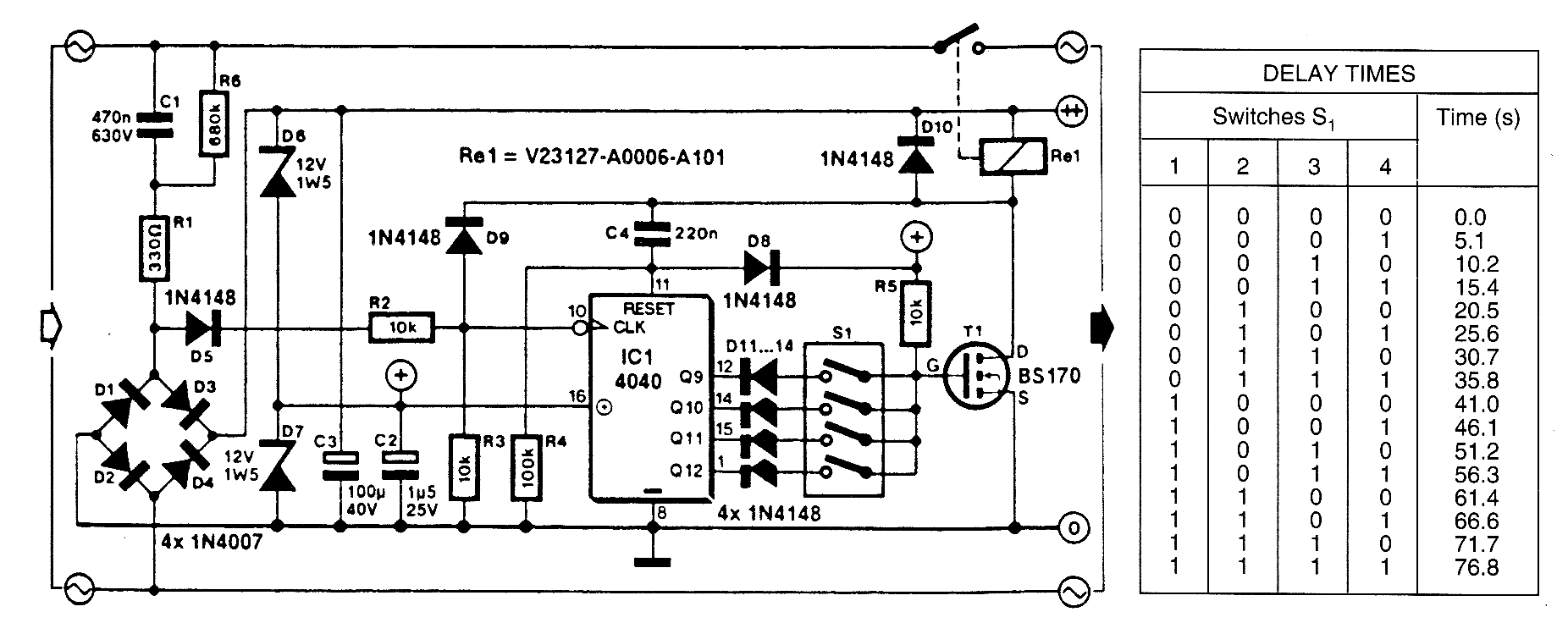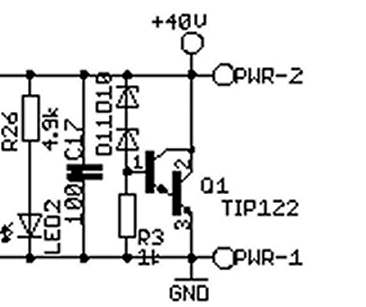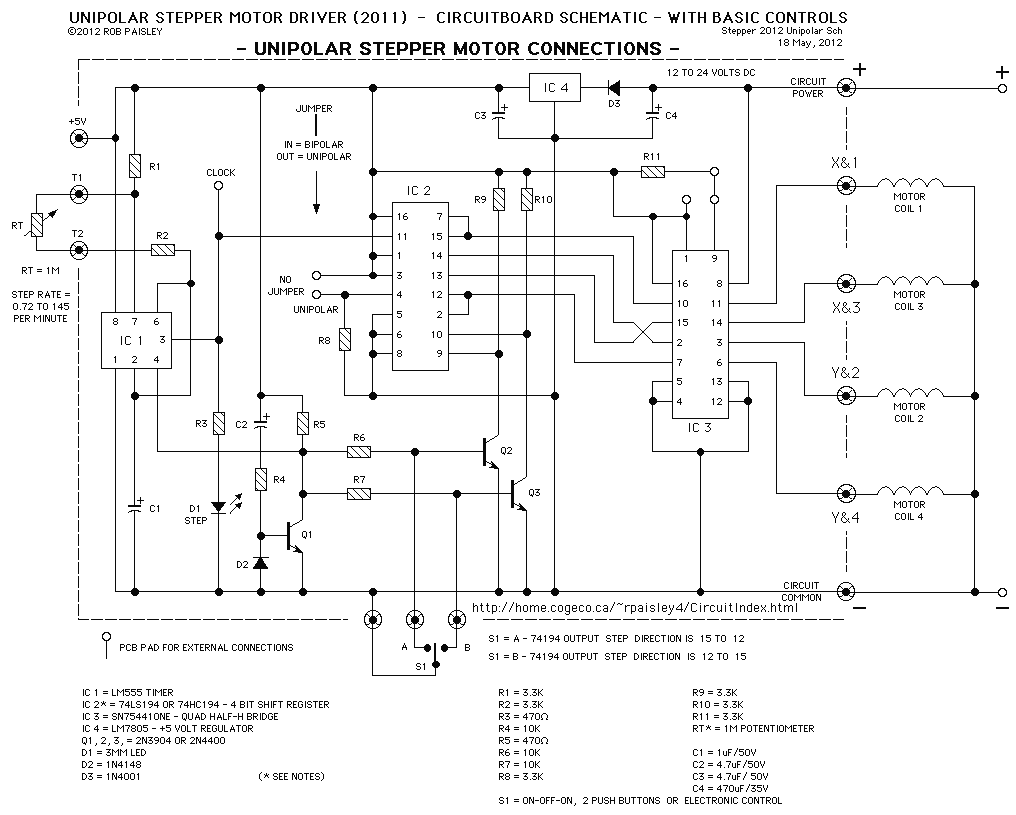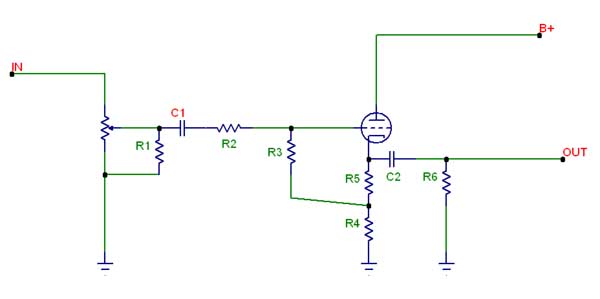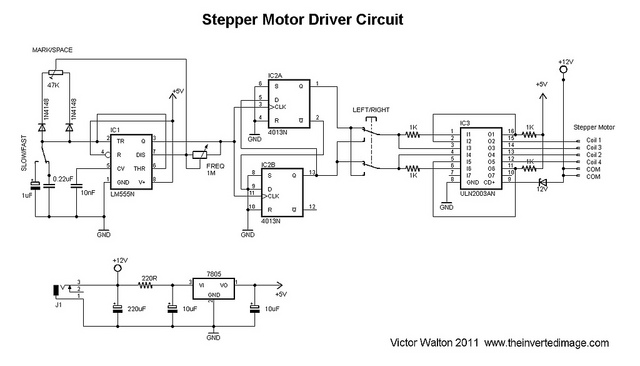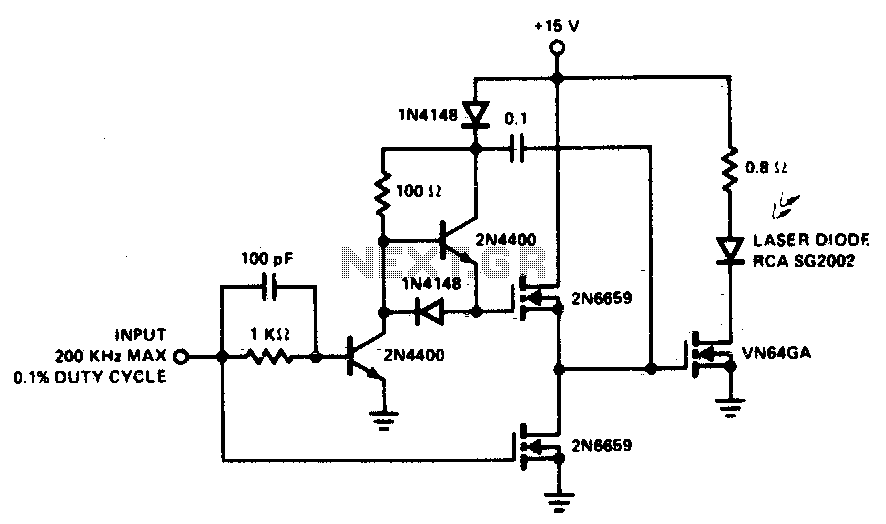
JFET Nixie Tube Driver
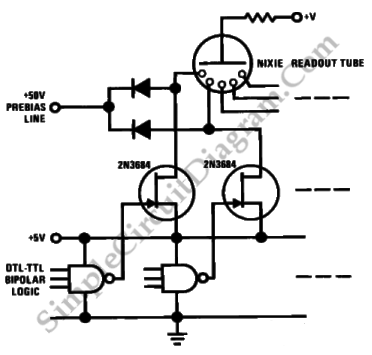
This is a driver circuit for a nixie tube. The circuit utilizes the 2N3684 transistor as the nixie tube driver due to its Vp rating of 2-5 volts, which ideally matches TTL-DTL logic levels.
The nixie tube driver circuit is designed to control the operation of nixie tubes, which are gas-discharge display devices used for numerical readouts. The 2N3684 transistor is selected for its ability to handle the required voltage range effectively, ensuring reliable switching and illumination of the nixie tube segments.
In this circuit, the 2N3684 acts as a switch, allowing or interrupting the flow of current to the nixie tube based on TTL (Transistor-Transistor Logic) or DTL (Diode-Transistor Logic) input signals. The circuit typically consists of a series of resistors to limit the current flowing through the nixie tube and to protect the transistor from excessive current. Additionally, capacitors may be included for noise filtering and stability.
The design may also incorporate a microcontroller or a logic gate to generate the control signals, enabling the display of various numerals by selectively activating the corresponding segments of the nixie tube. Proper biasing of the transistor is crucial for ensuring that it operates within its safe limits while switching efficiently.
Overall, this driver circuit is an essential component in applications requiring numerical displays, combining the vintage aesthetic of nixie tubes with modern electronic control techniques.This is a driver circuit for nixie tube. This circuit uses 2N3684 as nixie tube drivers because its Vp is 2-5 volts which is ideally matches TTL-DTL logic.. 🔗 External reference
The nixie tube driver circuit is designed to control the operation of nixie tubes, which are gas-discharge display devices used for numerical readouts. The 2N3684 transistor is selected for its ability to handle the required voltage range effectively, ensuring reliable switching and illumination of the nixie tube segments.
In this circuit, the 2N3684 acts as a switch, allowing or interrupting the flow of current to the nixie tube based on TTL (Transistor-Transistor Logic) or DTL (Diode-Transistor Logic) input signals. The circuit typically consists of a series of resistors to limit the current flowing through the nixie tube and to protect the transistor from excessive current. Additionally, capacitors may be included for noise filtering and stability.
The design may also incorporate a microcontroller or a logic gate to generate the control signals, enabling the display of various numerals by selectively activating the corresponding segments of the nixie tube. Proper biasing of the transistor is crucial for ensuring that it operates within its safe limits while switching efficiently.
Overall, this driver circuit is an essential component in applications requiring numerical displays, combining the vintage aesthetic of nixie tubes with modern electronic control techniques.This is a driver circuit for nixie tube. This circuit uses 2N3684 as nixie tube drivers because its Vp is 2-5 volts which is ideally matches TTL-DTL logic.. 🔗 External reference
